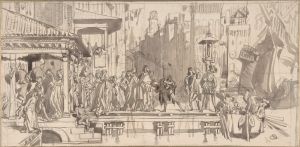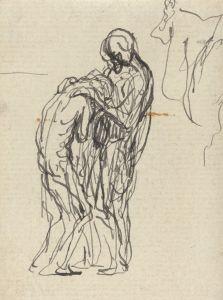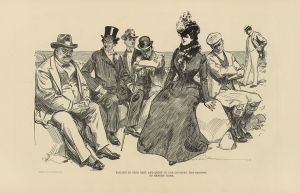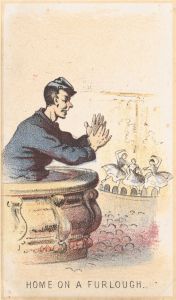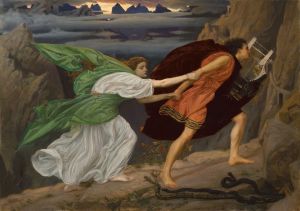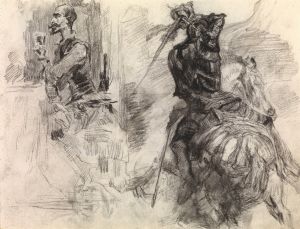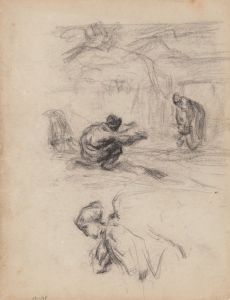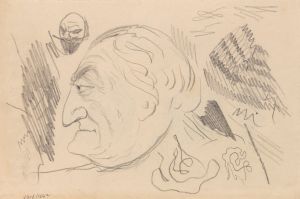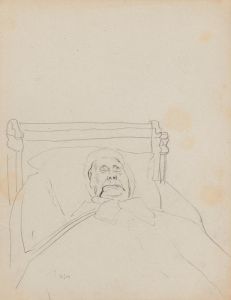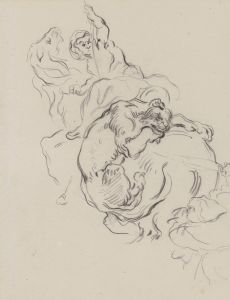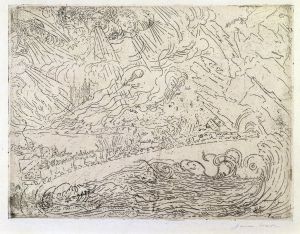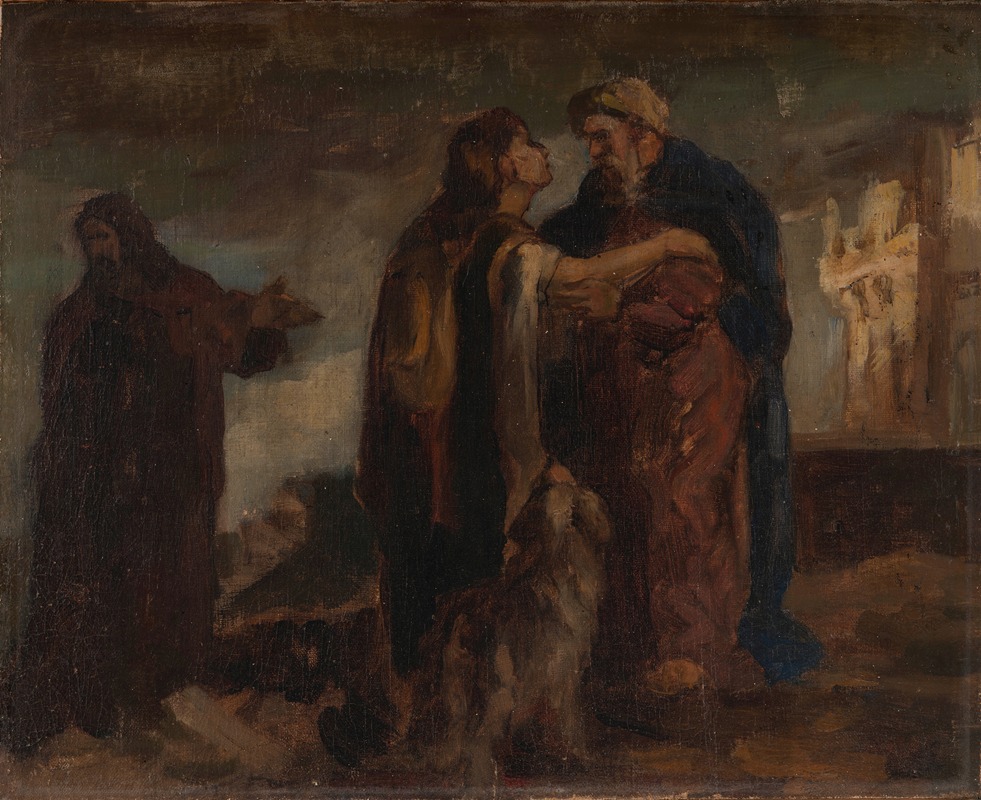
Return of the prodigal son
A hand-painted replica of James Ensor’s masterpiece Return of the prodigal son, meticulously crafted by professional artists to capture the true essence of the original. Each piece is created with museum-quality canvas and rare mineral pigments, carefully painted by experienced artists with delicate brushstrokes and rich, layered colors to perfectly recreate the texture of the original artwork. Unlike machine-printed reproductions, this hand-painted version brings the painting to life, infused with the artist’s emotions and skill in every stroke. Whether for personal collection or home decoration, it instantly elevates the artistic atmosphere of any space.
James Ensor's "Return of the Prodigal Son" is a notable painting by the Belgian artist, created in 1882. Ensor, born in 1860 in Ostend, Belgium, is recognized for his unique and often provocative style that blends elements of realism, symbolism, and expressionism. His works frequently explore themes of social critique, mortality, and the grotesque, often employing vivid colors and dramatic compositions.
"Return of the Prodigal Son" is an oil on canvas painting that depicts the biblical parable of the prodigal son, a story from the Gospel of Luke in the New Testament. The parable tells of a young man who squanders his inheritance in reckless living and returns home destitute, only to be warmly welcomed by his forgiving father. This narrative has been a popular subject in Western art, symbolizing themes of repentance, forgiveness, and unconditional love.
Ensor's interpretation of the parable is distinctive and reflective of his broader artistic style. The painting captures the moment of the son's return, with a focus on the emotional intensity of the reunion. Ensor's use of color and light is particularly striking, with a palette that includes deep reds, blues, and earthy tones, creating a dramatic and somewhat somber atmosphere.
The composition of the painting is dynamic, with the figures arranged in a way that draws the viewer's eye towards the central interaction between the father and son. Ensor's brushwork is expressive, contributing to the overall emotional impact of the scene. The father's figure is depicted with a sense of compassion and relief, while the son appears weary and humbled, emphasizing the themes of redemption and forgiveness.
Ensor's "Return of the Prodigal Son" is also notable for its incorporation of elements that reflect his personal artistic vision. Unlike more traditional depictions of the parable, Ensor's version includes a sense of psychological depth and complexity. The background and surrounding figures are rendered with a level of detail that suggests a broader narrative context, inviting viewers to contemplate the societal and personal dimensions of the story.
This painting is part of Ensor's early body of work, created during a period when he was still developing his distinctive style. It demonstrates his interest in religious and moral themes, as well as his ability to convey profound human emotions through his art. Ensor's later works would continue to explore similar themes, often with an increasing emphasis on satire and the macabre.
"Return of the Prodigal Son" is housed in the Royal Museum of Fine Arts in Antwerp, Belgium, where it remains an important example of Ensor's early artistic achievements. The painting is appreciated not only for its technical skill and emotional depth but also for its contribution to the broader narrative of Western art and its exploration of timeless human themes.
In summary, James Ensor's "Return of the Prodigal Son" is a powerful and evocative painting that captures the essence of the biblical parable through the artist's unique and expressive style. It stands as a testament to Ensor's ability to blend traditional themes with his personal artistic vision, creating works that resonate with viewers on multiple levels.





